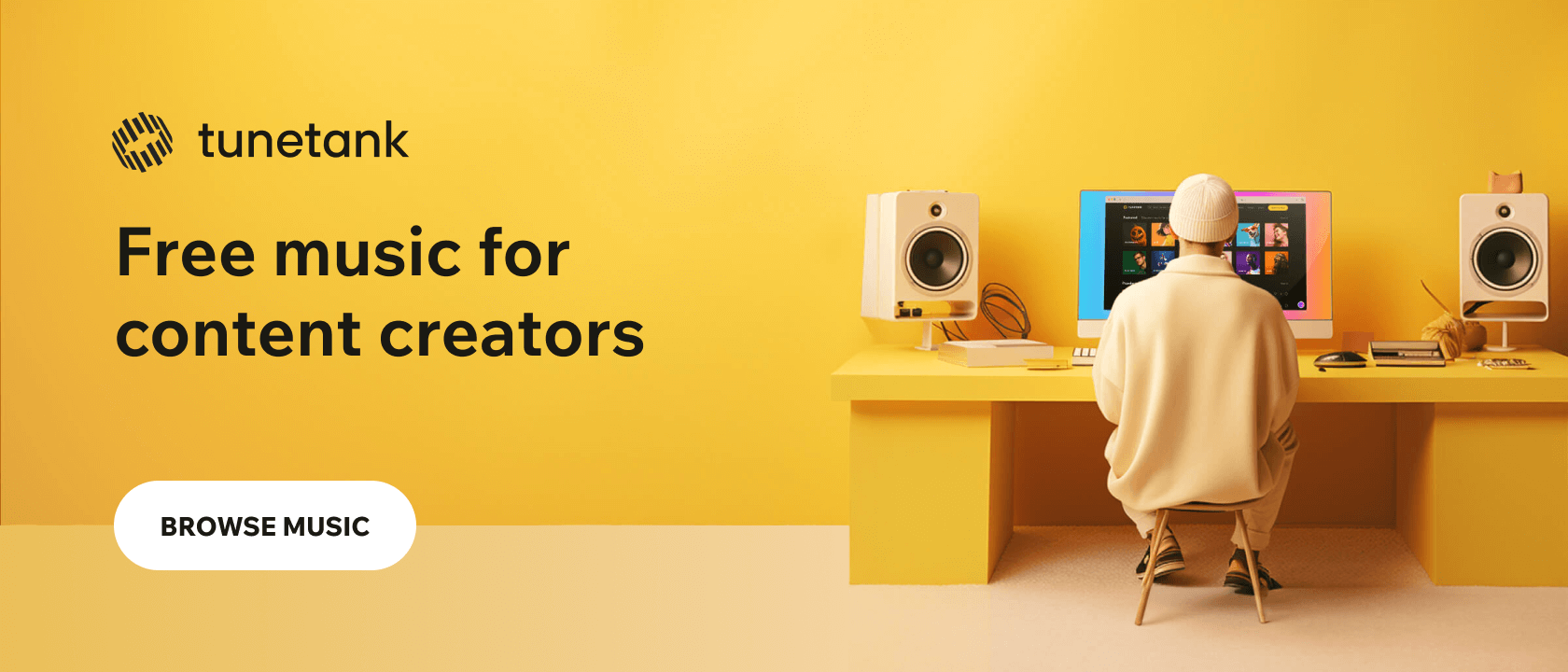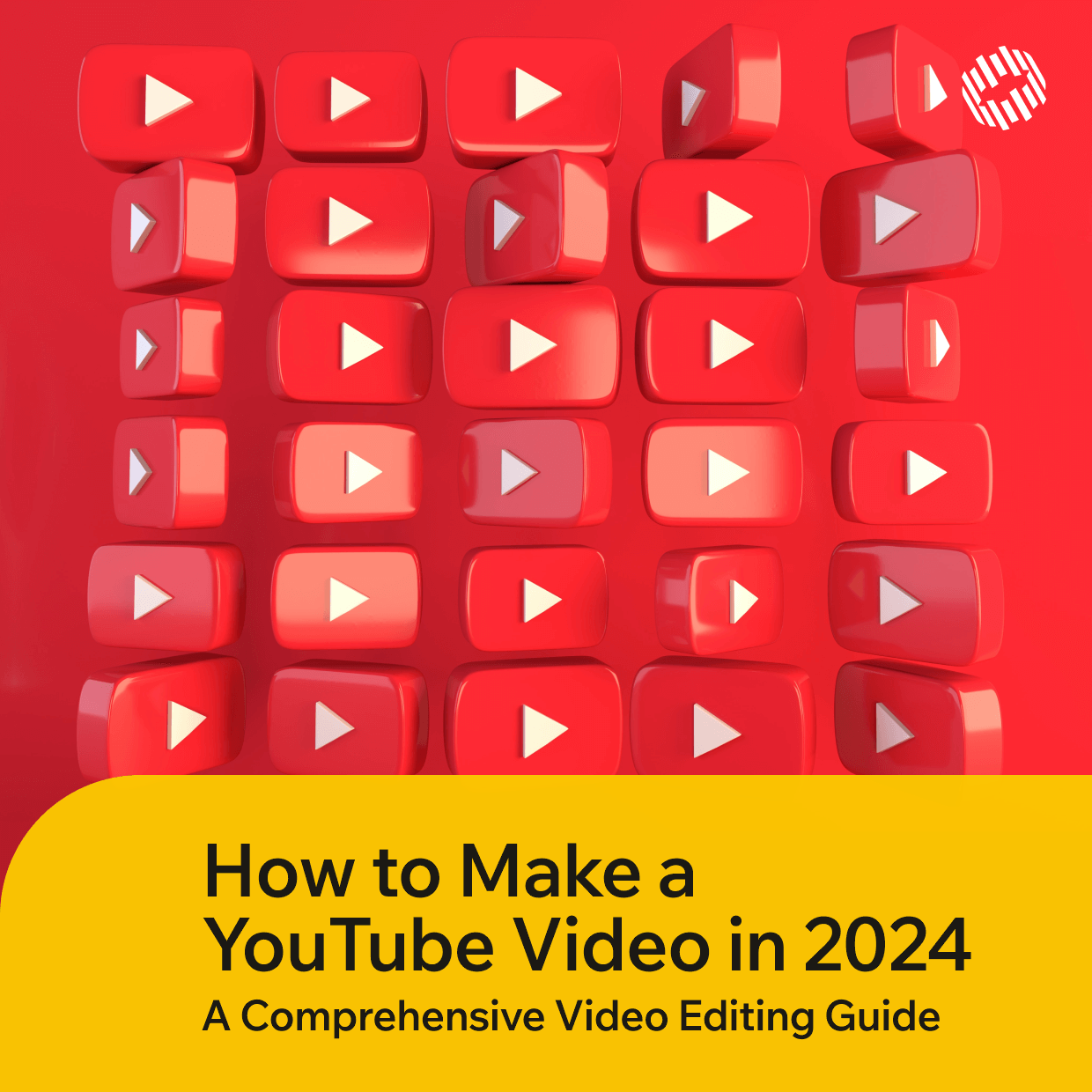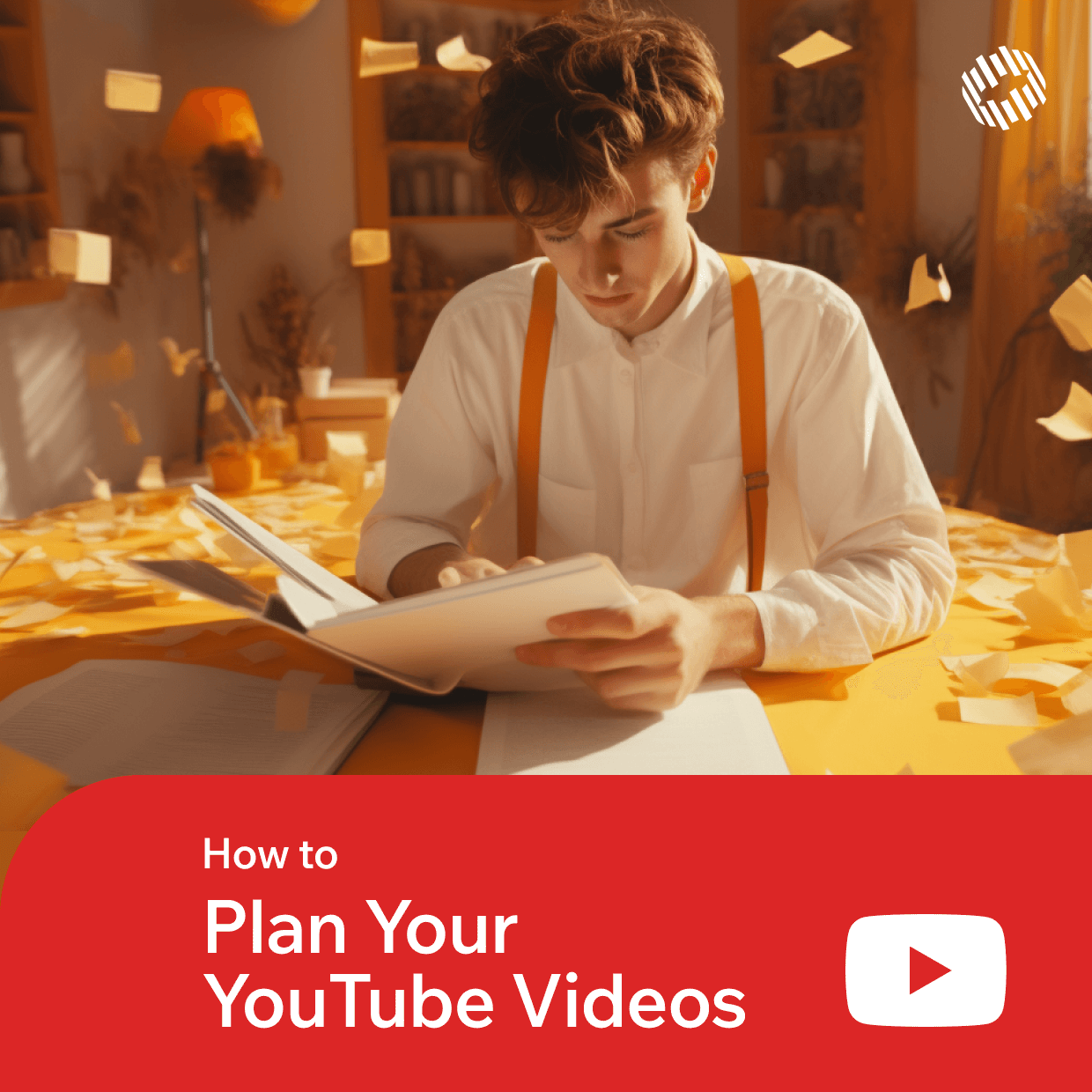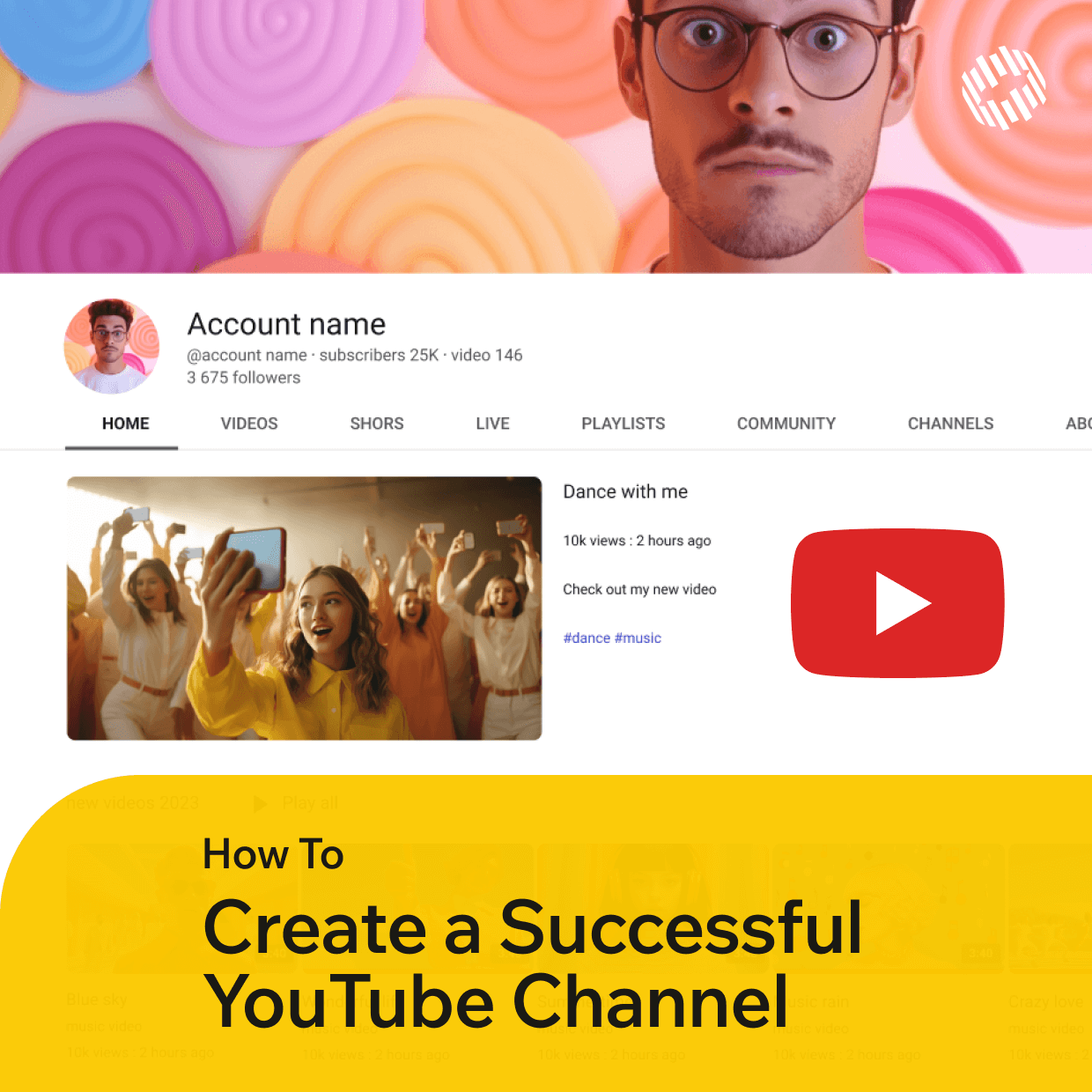2024 will mark another year of YouTube’s evolution. Enhanced AI algorithms now suggest highly personalized content, while 4K streaming has become a standard. Virtual reality content is on the rise, providing immersive experiences. These advancements have not only changed how creators produce content, but also how audiences interact with it.

Nowadays, the reason for more and more people asking “how to make a YouTube video?” lies in the appeal of creative independence, potentially limitless audience reach, and the chance to turn the passion into a profession.
In an era characterized by the democratization of media, creating a YouTube channel offers an enchanting opportunity to build a personal brand, share unique perspectives, and even monetize your hobby.
Although, the idea of becoming a content creator can sound farfetched, picking up such a hobby doesn’t require advanced courses or tons of investments. Most likely, you already have what it takes to make your first video, and this article is here to guide you.
Creating a YouTube Channel
Creating a YouTube channel begins with setting up a Google account, a fundamental step since YouTube is integrated with Google's services. Once your Google account is ready, head over to youtube.com and sign in using your new credentials.
There, you can start the actual process of creating your YouTube channel by clicking on your profile icon and selecting “Create a channel.” This is your opportunity to give your channel a personal touch: add a profile picture, a descriptive banner, and a channel description that encapsulates the essence of your content.
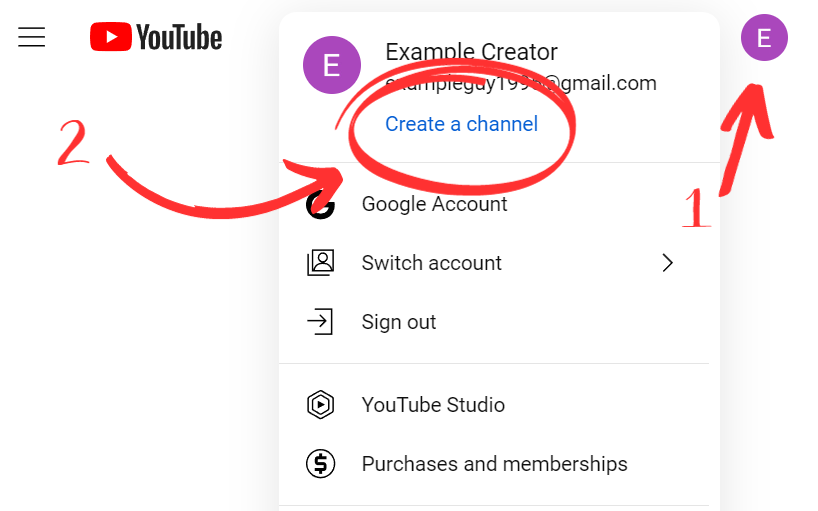
These initial steps lay the foundation for your YouTube journey, setting the stage for you to share your creations with the world.
How to Create a YouTube Video With a Unique Concept?
The YouTube landscape is more competitive than ever. Finding and showcasing a unique voice is crucial. Creators who infuse their personality and perspective into their content tend to build a more dedicated following, as authenticity resonates deeply with viewers.

So, before rushing to publish your first video, spend some time brainstorming concepts that align with your interests and popular media trends.
The inception of great YouTube content lies in effective research and idea generation. Utilizing tools like Google Trends, and engaging with the community through platforms like Reddit, Discord, or Twitter, helps creators stay abreast of what's trending and relevant.
Pre-production Essentials
A well-crafted script is the backbone of any successful video. It's not just about what you say, but how you say it. Scriptwriting involves careful structuring of your narrative, ensuring that your content is both informative and engaging.

Tom Scott is a quintessential example of a powerful storyteller on YouTube. Tom is celebrated for his ability to articulate complex scientific and technological concepts in an engaging, accessible manner. His storytelling skill captivates audiences, seamlessly blending facts with humor and wit.
Storyboarding and meticulous planning are crucial for crafting a coherent and visually appealing YouTube video. This process helps in visualizing the final product and organizing content in a way that best conveys the intended message. It also should include thoughts on the format of your video, YouTube Shorts and full-length videos require different approaches.
The Art of Capturing Engaging Footage
Filming is where your concept starts to become a reality. Adhering to your storyboard ensures that your footage aligns with your initial vision.
Utilizing creative camera angles and composing eye-catching shots are vital for keeping viewers engaged. Techniques like the rule of thirds, unique perspective shots, and smooth camera movements can greatly enhance the visual storytelling.

Dynamic storytelling in videos involves using various filming techniques. This could include time-lapses to show progression, slow-motion for dramatic effect, or jump cuts for a fast-paced narrative style.
Good audio is equally crucial; even the most visually stunning video can be undermined by poor sound quality. Use an external microphone and consider the acoustics of your filming location.
However, capturing engaging footage goes beyond technical skills. It involves understanding the narrative, knowing when to zoom in on a subject, and capturing emotions and reactions that resonate with viewers.
How to Edit a Video That Will Make an Impact?
Step 1: Importing and Organizing Footage
After filming, import your footage into your editing software. Generally, any MP4 editor will do the trick, since the format provides high quality and grants relatively small file size. However, you can also give YouTube Create a try. In this case, begin with creating a new project and importing all the clips.

Organize your footage by labeling and sorting clips into folders or bins. This might include categorizing clips by scene, type of shot, or subject. Proper organization streamlines the editing process, allowing you to find and sequence clips more efficiently.
Step 2: Editing Basics
Editing is where the magic happens. Start by laying out your clips on the timeline in the order they will appear. This is the rough cut, where you get a basic sense of the video’s structure. Trim excess footage from the beginning and end of clips to tighten the narrative and maintain pacing.
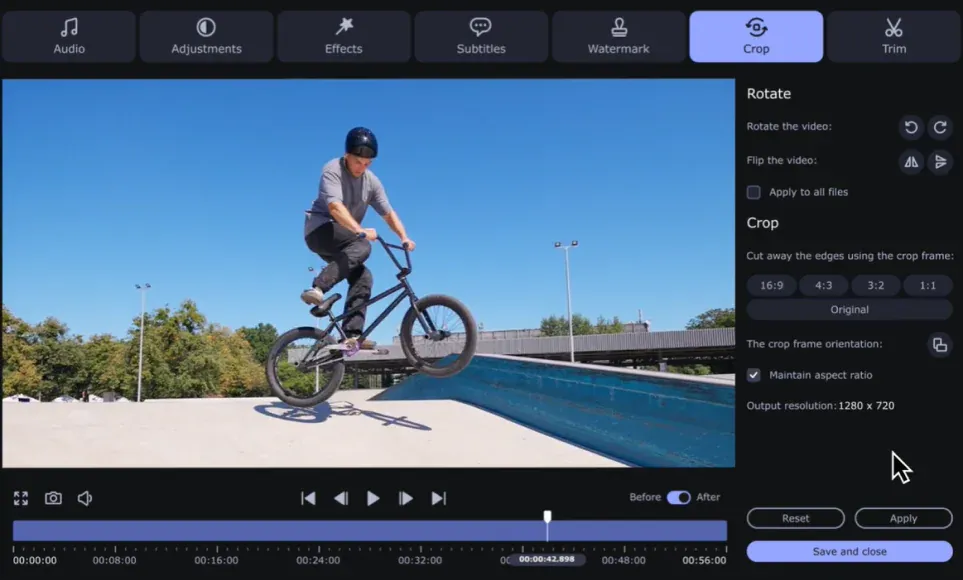
Pay attention to the flow of the video; it should feel natural and coherent. Transition effects between clips can be used to enhance the storytelling, but use them sparingly to avoid a cluttered feel.
Step 3: Editing for Impact
Once your rough cut is in place, dive into more advanced editing. Techniques like cutting on action, matching music tempo with video pacing, and using transitions thoughtfully can significantly impact how users would perceive your content.
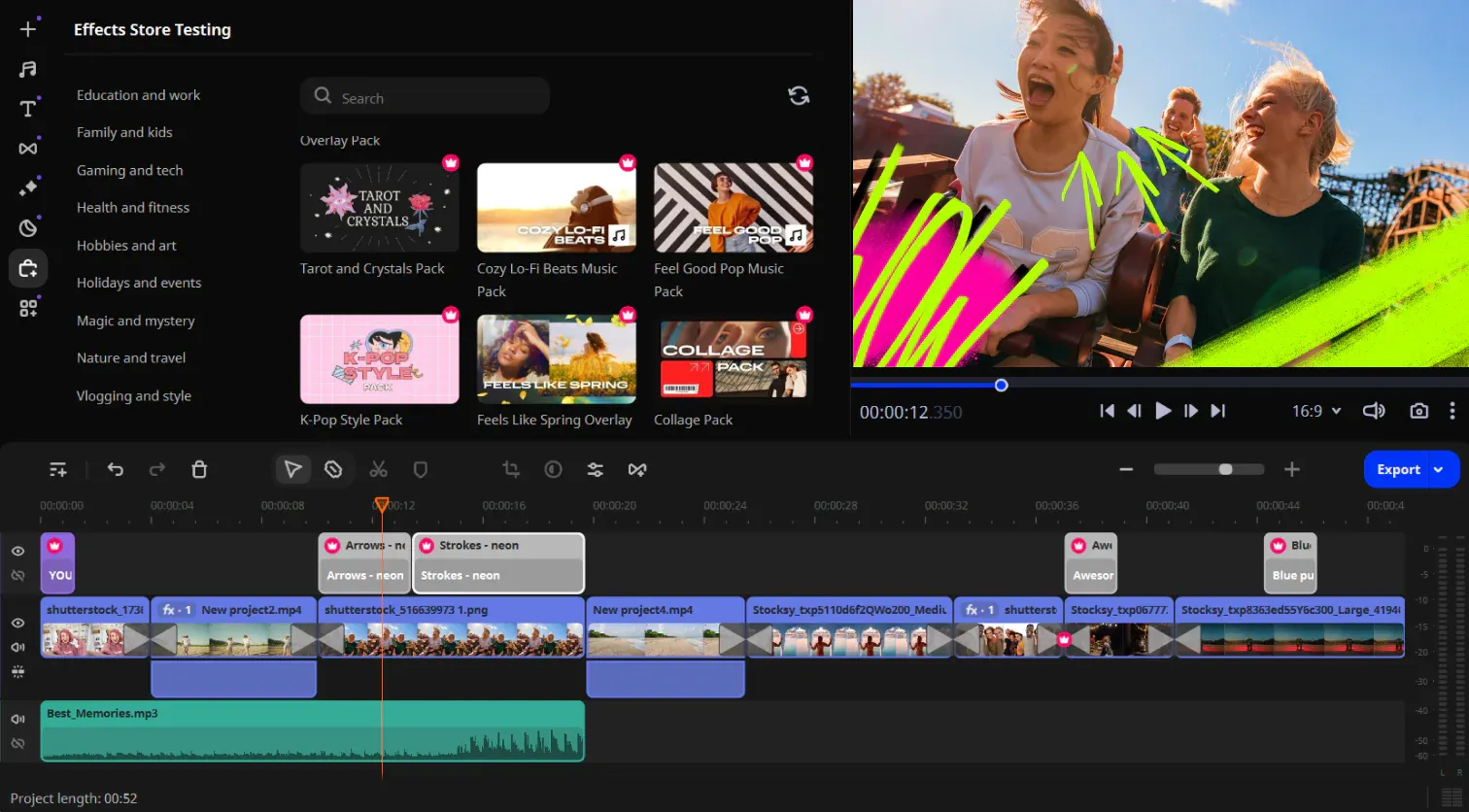
Graphics and visual effects, when used correctly, can add a layer of polish and professionalism. Your video editing software most likely contains a variety of advanced tools, like motion graphics, that can be employed to add that extra flair to your videos.
Peter McKinnon, a renowned Canadian YouTuber and photographer, is widely acclaimed for his exceptional video editing skills. He has gained a massive following by sharing his expertise in photography and videography, offering valuable advice on gear, techniques, and editing.
Step 4: Creating Titles and Captions
Titles and captions are crucial for accessibility and engagement. Your video title should be compelling and reflective of the content. The video thumbnail is a blank canvas where you can choose any font for the title to make sure it suits the style of your video.
Captions are essential for viewers who watch videos without sound. You can auto-generate captions in many video editing programs, but make sure to review them for accuracy.
Step 5: Final Review
Review your video multiple times. Look for technical issues like jump cuts, audio glitches, or color inconsistencies. Furthermore, assess the video from a viewer’s perspective. Is the story compelling and easy to follow? Is the pacing too fast or too slow? Feedback from others can provide new insights, so don’t hesitate to show your video to trusted peers or mentors before finalizing it.
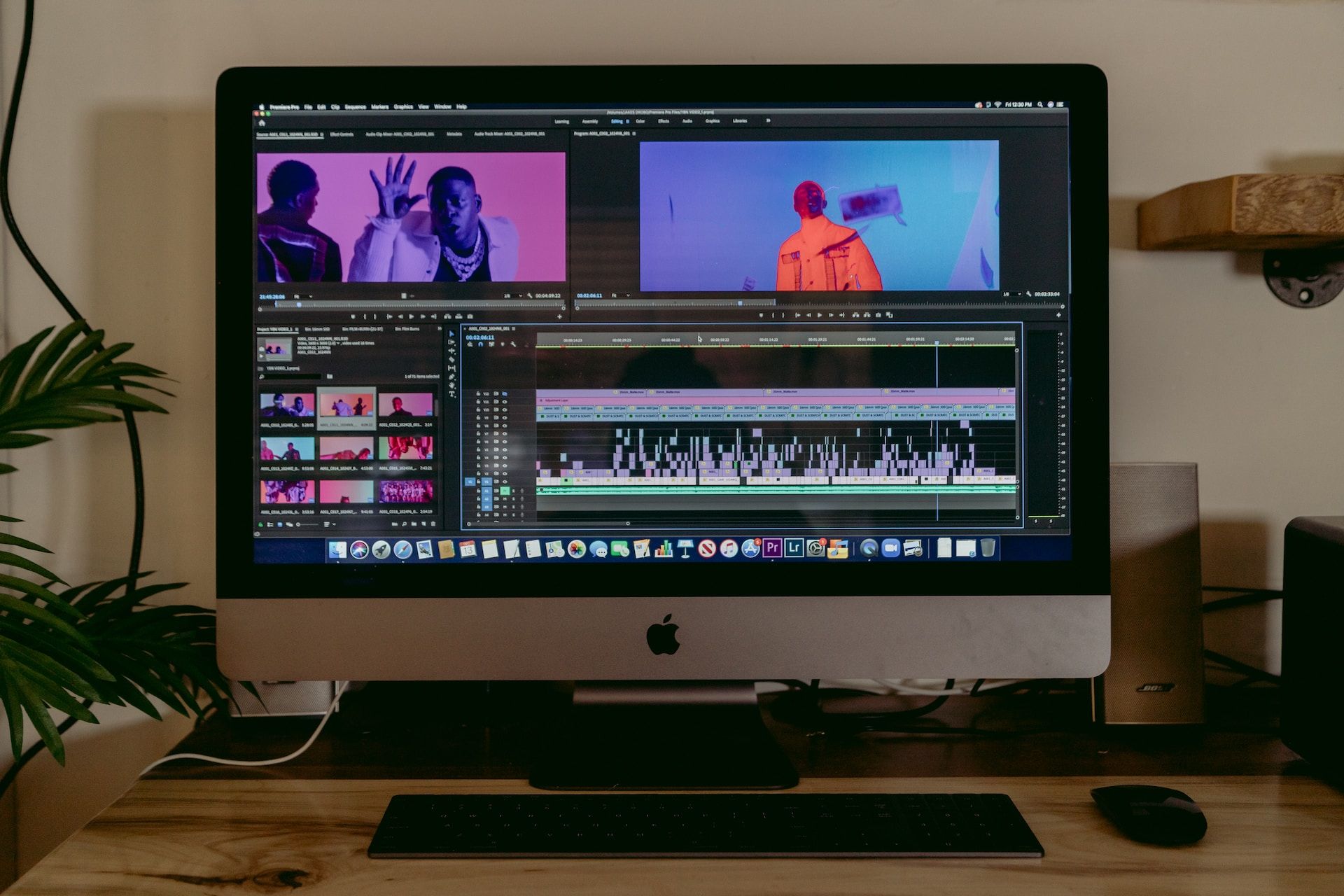
Step 6: Exporting Your Creation
Choose the right format for exporting your video.
Pay attention to the resolution and aspect ratio settings to ensure your video looks good on all devices.
Once exported, upload your video to YouTube. Write a clear, concise title and a detailed description with relevant keywords. Select an eye-catching thumbnail and add relevant tags to help the audience discover your video.
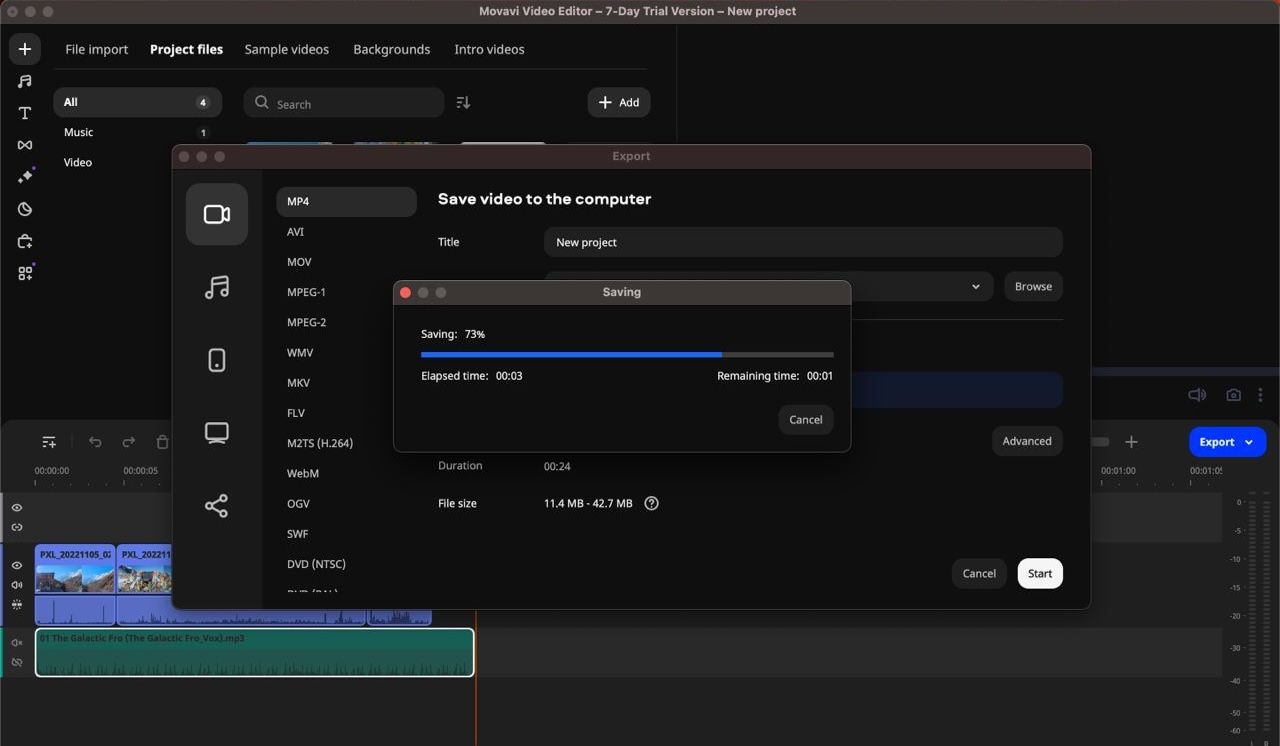
Consistency on YouTube
Creating one video for YouTube is a gigantic step in the right direction, but consistency is key in the platform’s fast-paced environment. A regular posting schedule helps build a loyal audience and boosts your channel's algorithmic visibility. It also allows you to plan and create content in advance, eliminating last-minute rushes.
Understanding YouTube's Algorithm Basics and Content Strategy
Understanding YouTube's algorithm is another essential know-how for creators. Algorithm in general prioritizes user engagement and watch time, so crafting content that keeps viewers hooked is paramount for better visibility. This includes building a strong introduction to hook viewers, and structuring your video for maximum retention.
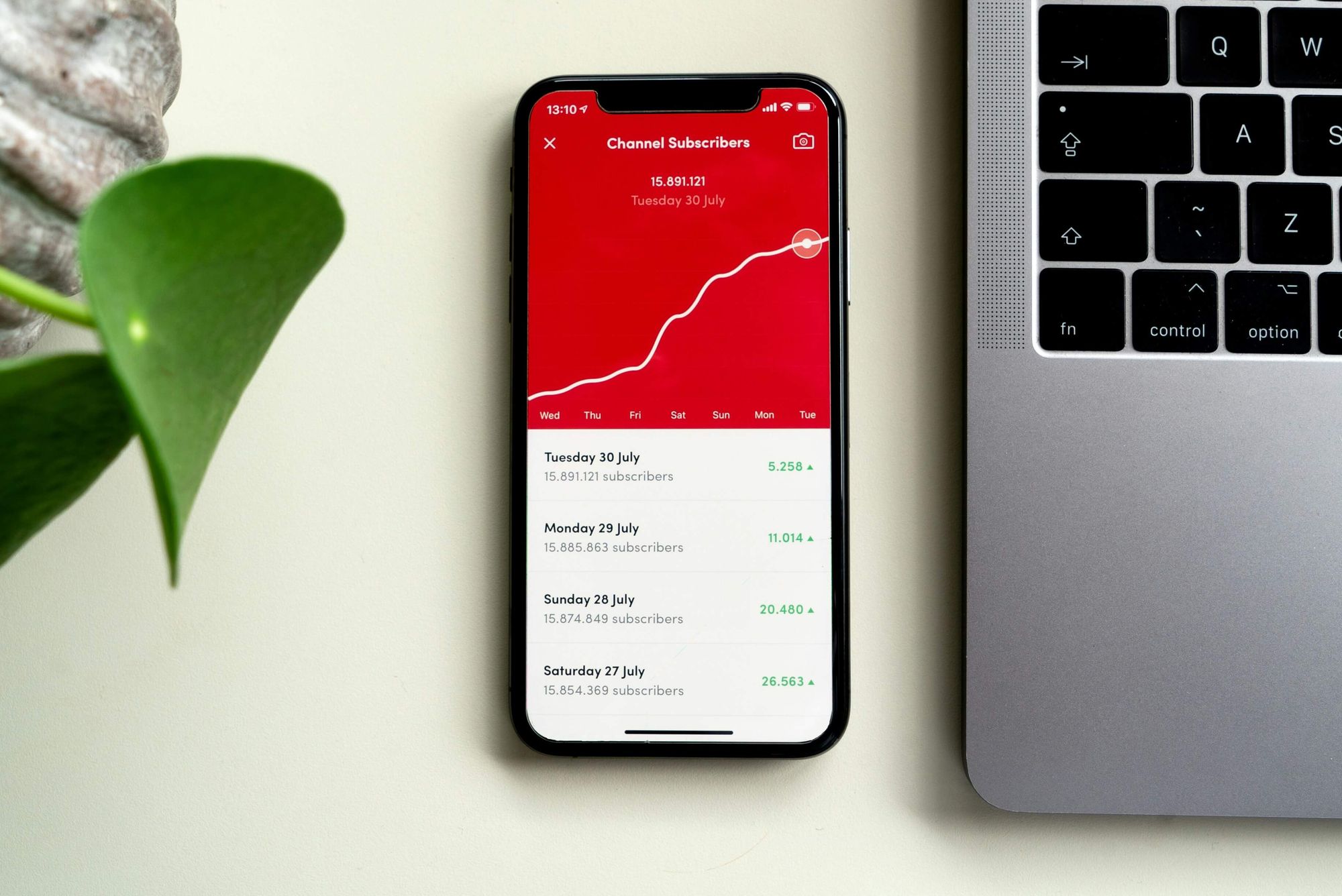
Additionally, researching keywords and optimizing your video descriptions can further improve your video's reach. Collaborating with other creators and participating in trends can also boost your visibility on the platform. Effective SEO and networking practices ensure that your videos are easily findable and rank higher in search results.
Experimenting with different content types and formats is another key to understanding what resonates with your audience and makes them come back to watch you again. This could involve varying your video length, trying different genres, or experimenting with storytelling styles.
Whenever you make these changes, the next step is constant analysis of performance data in the YouTube Studio, which is key to adapting and refining your content strategy.
Using Feedback for Growth
Audience feedback is invaluable for growth, just like analytics. They provide insights into viewer preferences and behavior, guiding content creators in fine-tuning their approach for maximum impact. Regularly checking comments, likes, and dislikes can be a great way to understand what to improve on.

Additionally, asking for feedback through community polls or surveys can help gauge the audience's interest in future content ideas. This also fosters a sense of being a part of the creative process among viewers.
Common Mistake All Beginners Make
Beginner YouTuber mistakes are natural, but the only way to avoid making them is by learning from them.

- Excessive Use of Effects: Overusing transitions and special effects distracts the audience, and takes away from the content's substance.
- Not Analyzing Performance: Failing to review analytics and performance data can hinder content improvement and growth strategies.
- Copying Trends Blindly: While it's important to be aware of trends, following them blindly without adding originality can result in unauthentic content that doesn't stand out.
- Neglecting Audience Engagement: Failing to interact with audience through comments or social media, results in missed opportunities to build a community.
- Inconsistent Posting Schedule: Not maintaining a regular posting schedule can lead to a loss of audience interest and engagement.
Conclusion
As we look towards the future of YouTube content creation, it's clear that the platform will continue to evolve, offering new opportunities and challenges. Embracing these changes, continuously learning, and adapting will be key to thriving in this dynamic landscape.
Remember, your YouTube journey is unique, and with the right approach, you can create content that resonates with audiences and stands the test of time.
